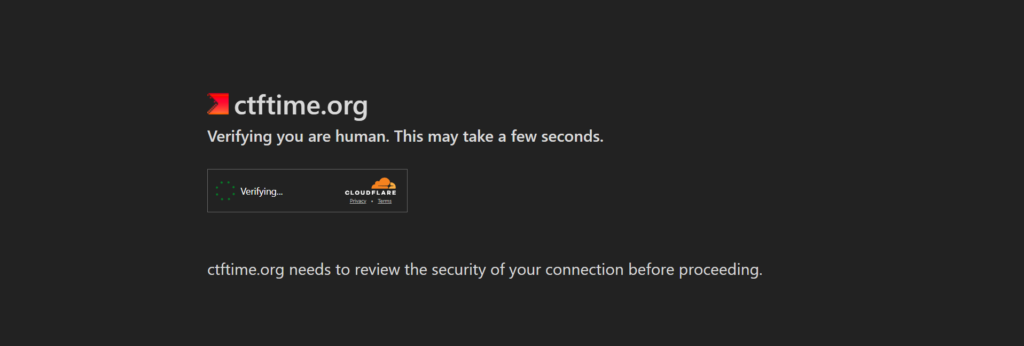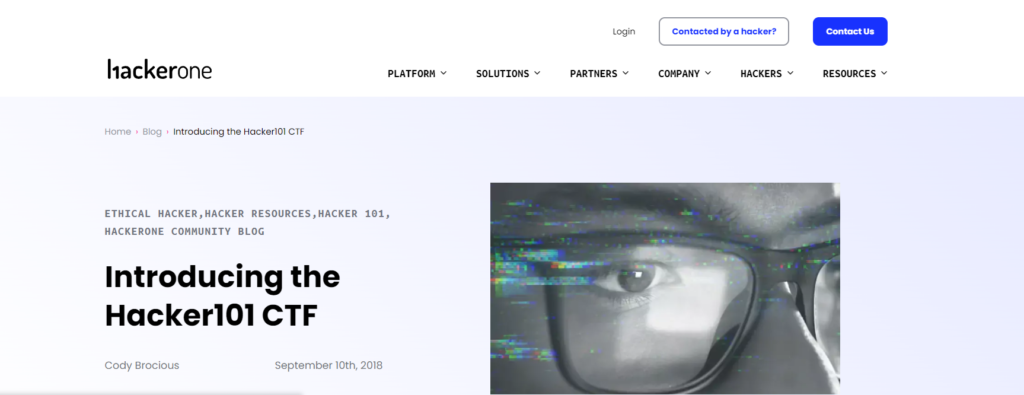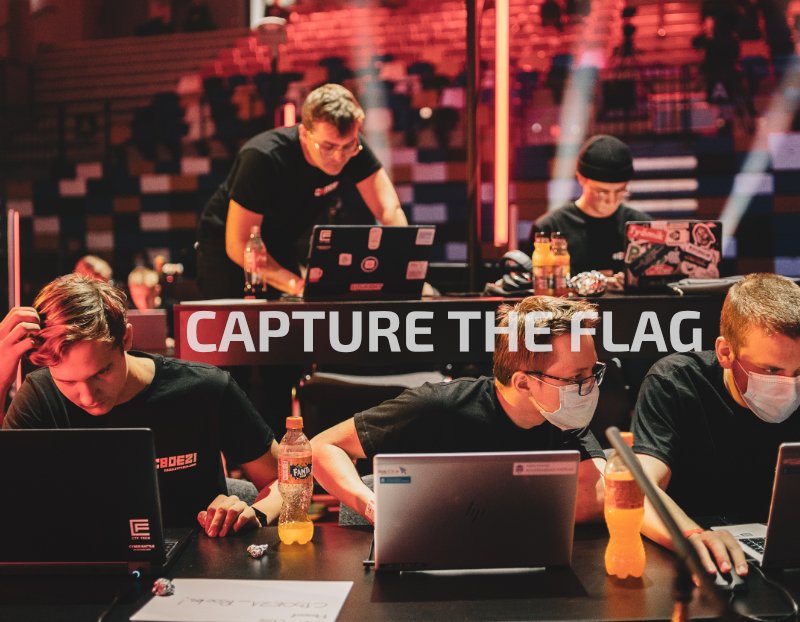What is Capture the Flag (CTF)?
Capture the Flag (CTF) in Cyber Security is essentially a gamified learning and competitive environment that tests participants’ abilities to find vulnerabilities in simulated systems. Here’s a breakdown of the key aspects:
The Goal:
- Just like the traditional capture the flag game, the objective here is to “capture” flags. These flags are pieces of information or text strings hidden within programs, websites, or purposefully vulnerable systems.
- Finding and capturing the flag demonstrates that you’ve successfully exploited a vulnerability and accessed the hidden information.
The Format:
- CTFs can be played individually or in teams.
- There are two main variations:
- Jeopardy-style: Teams compete to solve challenges from various cybersecurity domains (cryptography, forensics, web security etc.) and capture flags from the organizers.
- Attack/Defense: Teams here play against each other, trying to capture flags from each other’s simulated systems while defending their own.
The Benefits:
- CTFs are a popular way to learn and improve cybersecurity skills in fun and engaging way.
- They help participants develop critical thinking, problem-solving abilities, and practical application of security knowledge.
- CTFs also encourage teamwork, communication, and resourcefulness in a competive setting.
Finding CTFs:
CTFs are held online and in-person around the world, catering to all skill levels. There are beginner-friendly CTFs designed for educational purposes, while advanced CTFs challenge even the most seasoned cybersecurity professionals. Websites like CTF Time https://ctftime.org/ list ongoing and upcoming CTFs.
In essence, CTFs provide a safe and controlled environment to practice real-world cyber security skills, making them valuable tools for learning, training, and even career development in the cyber security field.
Why the CTF is so interesting in cyber security ?
Capture the Flag (CTF) competitions have become a mainstay in the cybersecurity world, attracting professionals and enthusiasts alike. But what exactly makes them so interesting?

Let’s delve deeper into the reasons why CTFs are more than just your average competition:
- Gamified Learning on Steroids: Imagine mastering cryptography by cracking codes or learning web security by exploiting vulnerabilities in a safe environment. CTFs take dry technical concepts and transform them into puzzles and challenges. This gamified approach makes the learning process significantly more engaging and interactive compared to passive studying.
- The Thrill of the Hunt: CTF challenges are designed to test your skills and push your boundaries. Each challenge presents a unique problem that requires creative thinking and the application of various cybersecurity techniques. Solving a particularly difficult challenge offers an immense sense of accomplishment and intellectual satisfaction.
- The Synergy of Competition and Collaboration: CTFs come in both individual and team-based formats. In team-based CTFs, you get the thrill of competition while collaborating with others. The pressure to perform under a time limit combined with the need to effectively communicate and leverage each other’s strengths fosters a unique camaraderie and teamwork experience.
- From Theory to Practice: Cybersecurity is a field that thrives on hands-on experience. CTFs provide a safe and controlled environment to experiment with various hacking techniques and tools. You can test your theoretical knowledge against real-world vulnerabilities, allowing you to solidify your understanding and identify areas for improvement.
- A Showcase for Talent: The competitive nature of CTFs makes them a valuable platform to showcase your cybersecurity skills to potential employers. Performing well in renowned CTFs or even leading your team to victory can significantly boost your resume and demonstrate your problem-solving capabilities in a practical setting. This can be major advantage in a highly competitive job market.
Top Websites to Practice Capture the Flag(CTF)
Here’s a list of top websites to practice CTF (Capture the Flag), categorized based on their approach:
Jeopardy Style CTFs:
1. Root-Me
https://www.root-me.org/?lang=en
Root me offers hundreds of challenges across various cybersecurity domains, making it a great all-rounder for beginners and experienced players alike.

2. Try Hack Me
Try Hack Me provides a gamified learning experience with themed “rooms” that focus on specific cybersecurity skills. It’s a beginner-friendly option with a structured learning path.

3. Hack The Box
Hack the box caters to a wider range of skill levels, with some beginner challenges and a strong focus on advanced, real-world scenarios (Subscription based).

4. Over The Wire
https://overthewire.org/wargames/
Over the wire offers a series of wargames designed specifically for those interested in web security and penetration testing. It utilizes a unique “wargame” format.

5. Pico CTF
Pico CTF is designed specifically for beginners and young learners, making it a perfect entry point for newcomers to the world of CTFs.

6. Google CTF
https://capturetheflag.withgoogle.com/
Google CTF meaning it focuses on individual or team-based challenges across various cybersecurity domains. Participants solve puzzles from areas like cryptography, forensics, web security, and more to capture flags and earn points.

Attack/Defense CTFs:
7. Stronghold
https://ctftime.org/writeup/36251
Stronghold focuses on team-based attack/defense style CTFs, where teams compete to capture flags from each other’s simulated systems while defending their own.

Real-world Scenario CTFs:
8. Sans Institute CTFs
https://www.sans.org/mlp/holiday-hack-challenge-2023/
Sans Institute CTFs offered by the SANS Institute, these CTFs simulate real-world security incidents and are a great way to test your skills under pressure.

Community-driven CTFs:
9. CTF Time
CTF Time is a website that lists ongoing and upcoming CTFs worldwide. Its a great resource for finding CTFs that match your interests and skill level.

Beginner-friendly CTFs:
10. We Chall
We Chall offers CTF challenges of varying difficulty levels, with a good selection of beginner-friendly puzzles.

11. Hacker101
Hacker101 CTF is free. Its provided by hackerOne as a free class for hackers, offering a hands-on approach to learning web security.

12. HackerOne
https://www.hackerone.com/ethical-hacker/introducing-hacker101-ctf
HackerOne itself is a vulnerability coordination and Bug Bounty platform. While it offers free resources like Hacker101 for learning, its main service facilitates paid bug bounty programs where security researchers can earn rewards for reporting vulnerabilities.

What is Ethical Hacking ?
Ethical hacking, also known as penetration testing, is the authorized practice of simulating cyberattacks on a computer system, application, or network. The goal is to identify vulnerabilities that malicious hackers could exploit and then fix those vulnerabilities before they can be used in a real attack.
The key concepts:
- Authorized: Ethical Hackers always have permission from the owner of the system they are testing. This is crucial to differentiate them from malicious hackers who break into systems without permission.
- Simulating Cyberattacks: Ethical hackers use the same tools and techniques that malicious hacker do, but with the intention of finding weaknesses, not causing harm.
- Identifying Vulnerabilities: By exploiting these vulnerabilities in a controlled environment, ethical hackers can help organizations understand their security posture and identify areas where they need to improve.
- Fixing Vulnerabilities: Once vulnerabilities are identified, they can be patched or mitigated to make it more difficult for malicious hackers to exploit them.
Top Places to Practice Ethical Hacking On Your Own

1. VulnHub

VulnHub is a well-known platform providing you with virtual machine (VMs) to learn and Practice hacking skills. It provides a comprehensive environment for learning about various Cyber Security concepts. https://www.vulnhub.com/
Type of hacking : Targeted services, such as websites, databases, and email servers.
2. Metasploitable

Metasploitable, from Rapid7, developers of the Metasploit penetration testing toolkit, is a series of intentionally vulnerable virtual machines (VMs). These VMs present a variety of vulnerabilities, enabling ethical hackers and cyber security professionals alike to hone their penetration testing skills in a realistic yet safe environment.https://docs.rapid7.com/metasploit/metasploitable-2/
Type of hacking: Common vulnerabilities
3. OWASP Juice Shop

The OWASP Juice Shop is designed to emulate a real-world e-commerce site with all its typical functionalities but with numerous security vulnerabilities. The vulnerabilities found in Juice Shop are based on the OWASP Top Ten, a list of the most critical web application security risks. This means you’ll be exposed to common threats, from Injection flaws to Cross-site Scripting (XSS), Insecure Direct Object References (IDOR), and many more.https://juice-shop.herokuapp.com/#/
Type of hacking: Web Application
4. Active Directory Lab

Our last recommendation is to build your own active directory lab, which consists of a Windows server and at least two windows machines. This is a great way to learn how to attack Active Directory, which more than 90% of fortune 1000 companies use.
Active Directory can be a complicated and tedious environment to navigate; therefore, practicing in your home lab will be beneficial to honing your skills. Not only that, but many penetration testing exams now include Active Directory, so this can be a great way to prepare yourself. https://github.com/Orange-Cyberdefense/GOAD
Type of hacking: Network Penetration Testing
5. Hack The Box

Hack The Box (HTB) offers various machines designed with varying vulnerabilities and complexities, simulating real-world environments. Each machine provides a unique challenge, helping you master various aspects of penetration testing and ethical hacking.https://www.hackthebox.com/
Type of hacking: Capture the Flag, Network Penetration Testing, Targeted services, such as websites, databases, and email servers.
6. PortSwigger’s Web Security Academy Labs

PortSwigger’s Web Security Acaddemy is a free-to-use, comprehensive learning platform dedicated to web security. Created by the makers of the popular web application Security testing tool Burp Suite, the academy provides an expansive array of topics that range from foundational to advanced concepts.https://portswigger.net/
Type of hacking: Web Application
CTFs offer a valuable space for anyone interested in cybersecurity, from beginners to professionals. They can be a stepping stone to a career in cybersecurity, a way to stay updated on the latest threats, or simply a fun and intellectually stimulating challenge.

